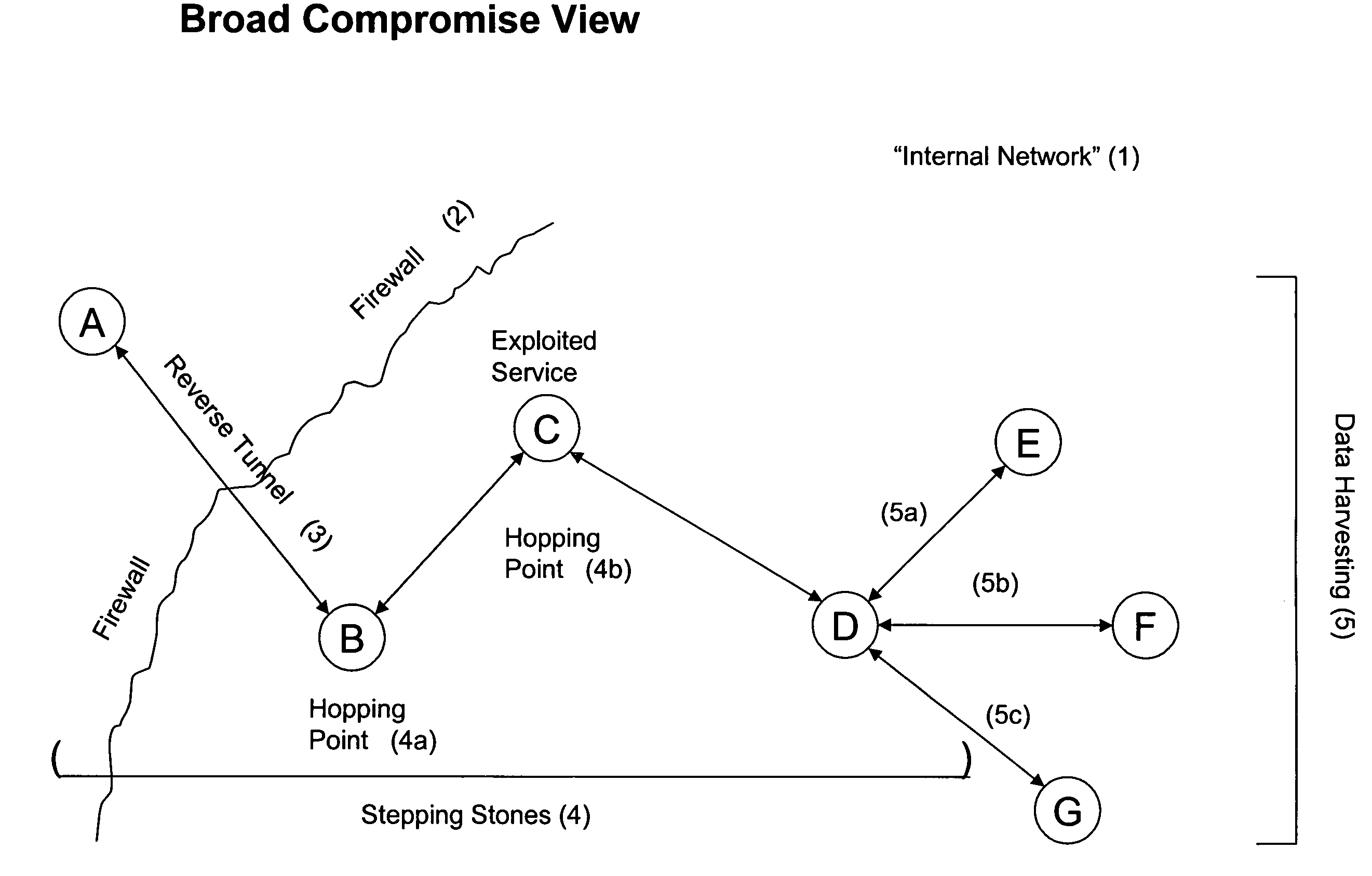Systems and methods for detecting a compromised network
a network and system detection technology, applied in the field of systems and methods for detecting a compromised network, can solve the problems of less than optimal practices for detecting hacking attacks, less effective for detecting the activities of malicious insiders or hackers, and even more difficult to identify hackers
- Summary
- Abstract
- Description
- Claims
- Application Information
AI Technical Summary
Benefits of technology
Problems solved by technology
Method used
Image
Examples
Embodiment Construction
[0041] Disclosed herein are systems and methods monitoring and analyzing network traffic, particularly traffic on internal networks. Internal networks include networks that are operated under the supervision of a limited number of network administrators, typically one administrator. Such networks are vulnerable to compromise by intruders. Intruders typically exploit a network by a four step process—infiltration (gaining access), reconnaissance (gathering credentials to access protected hosts), establishing residency (e.g., by establishing a reverse tunnel), and taking unauthorized action (e.g., stealing data, disrupting the network). The invention is directed to systems and methods for identifying a compromise in a network by identifying the activities of an intruder in one or more of the stages of compromise, and may be more fully appreciated by reference to the figures and examples provided herein. However, the figures and examples are provided for purposes of illustrating the inv...
PUM
 Login to View More
Login to View More Abstract
Description
Claims
Application Information
 Login to View More
Login to View More - R&D
- Intellectual Property
- Life Sciences
- Materials
- Tech Scout
- Unparalleled Data Quality
- Higher Quality Content
- 60% Fewer Hallucinations
Browse by: Latest US Patents, China's latest patents, Technical Efficacy Thesaurus, Application Domain, Technology Topic, Popular Technical Reports.
© 2025 PatSnap. All rights reserved.Legal|Privacy policy|Modern Slavery Act Transparency Statement|Sitemap|About US| Contact US: help@patsnap.com



